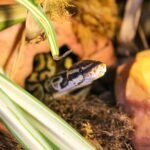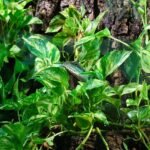Caring for a bearded dragon can be a rewarding experience. These fascinating reptiles require specific conditions to thrive, which includes proper habitat setup, diet, and health monitoring. By understanding their needs, you can ensure a long, healthy life for your pet.
Setting up the right environment is crucial. A spacious terrarium with adequate lighting and temperature will mimic their natural habitat, allowing them to feel secure and comfortable. Regular maintenance of their living space, along with a balanced diet of insects and vegetables, is equally important for their well-being.
Being mindful of their behavior and health is essential. Observing your bearded dragon regularly helps you recognize any changes that may indicate stress or illness. With the right care routines in place, you can foster a strong bond and enjoy the companionship of your bearded dragon for years to come.
Also, I have added links to products I recommend to help you find the proper equipment to care for your beardie!
Species Overview
Bearded dragons belong to the Pogona genus, with the most common species being Pogona vitticeps. These reptiles are native to Australia, thriving in arid, rocky environments. Adult bearded dragons average 18 to 24 inches in length and can weigh between 10 to 20 ounces. Their distinctive “beard,” which darkens during stress or aggression, serves as a key identification feature. The skin color varies widely, ranging from shades of brown, beige, and yellow, often with patterns.
Behavior and Temperament
Bearded dragons are known for their docile and friendly nature. They often enjoy human interaction and can become quite social with regular handling. These reptiles exhibit various behaviors, including arm waving, head bobbing, and color changes, which are ways to communicate and express mood.
They are often curious and explorative, making them active pets. Provide them with enrichment, like climbing structures and hiding spots, to satisfy their natural instincts. Bearded dragons typically have a calm disposition, making them suitable for both new and experienced reptile owners. Familiarity and gentle handling can enhance their trust and reduce stress, leading to a more enjoyable relationship with your pet.
Creating the Ideal Enclosure
Terrarium Setup
Choose a terrarium that is at least 40 gallons for one adult bearded dragon. A spacious habitat allows them to move and explore comfortably. Use a substrate like reptile carpet, ceramic tiles, or excavator clay to prevent ingestion hazards.
Incorporate hides and climbing structures; rocks and branches will enrich their environment. Provide a shallow water dish for hydration. Arrange the habitat with areas for basking and cooling, creating distinct zones to cater to their temperature needs.
Links: 47 gallon enclosure
Temperature and Lighting
Establish a temperature gradient within the terrarium. The basking spot should reach 100-110°F (38-43°C), while the cool side should range from 75-85°F (24-29°C). Use a reliable digital thermometer to monitor these temperatures consistently. Additionally get a temperature gun to check the temperatures of exact locations within the enclosure.
UVB lighting is crucial for calcium absorption and overall health. Install a UVB bulb that spans at least two-thirds of the enclosure. Replace the bulb every six months, as its effectiveness diminishes over time, ensuring your bearded dragon receives adequate light.
Links: UVB Hood and Bulb Kit Heat Lamp 2 Pack Digital Thermometer/ Hydrometer Temperature Gun
Humidity and Ventilation
Maintain humidity levels between 30-40% to mimic the natural arid environment of bearded dragons. Use a hygrometer to check humidity levels. Mist the habitat lightly if humidity drops too low, but avoid excessive moisture, as this can lead to respiratory issues.
Ensure your terrarium has proper ventilation. Use screen tops to allow airflow while preventing escape. Good ventilation helps reduce the risk of mold and maintains a healthy environment. Regularly clean the enclosure to eliminate waste and bacteria, promoting a safer habitat for your pet.
Feeding Your Bearded Dragon
Dietary Requirements
Bearded dragons are omnivores, meaning they need a mix of live insects and plant matter to thrive. The primary insects you should offer are crickets, mealworms, and dubia roaches. Aim to feed insects that are appropriately sized for your dragon. As a general guideline, insects should not be larger than the space between your pet’s eyes.
In addition to insects, leafy greens should make up about 20-50% of their diet. Options like collard greens, dandelion greens, and mustard greens are nutritious choices. Avoid iceberg lettuce as it offers little nutritional value. For fruits, such as strawberries and blueberries, limit these to occasional treats, constituting about 10% of the diet.
Feeding Schedule
Establishing a consistent feeding schedule is essential for your bearded dragon. Young dragons require feeding every day, while adults can be fed every 2-3 days. Observe your dragon’s eating habits; if they consistently leave food uneaten, consider adjusting portion sizes.
Use a shallow dish for greens and a separate dish for insects. Offer food in the morning and remove any uneaten items after a few hours to prevent spoilage. Monitor your bearded dragon’s weight and activity levels; these can indicate whether your feeding schedule needs adjustment.
Supplements and Vitamins
To ensure your bearded dragon receives all necessary nutrients, regular supplementation is key. Calcium is vital for bone health, so dust insects with a calcium powder before feeding. You should provide a vitamin supplement containing D3 to support overall health, especially for indoor dragons who may not get enough sunlight.
Supplements should be provided about 2-3 times a week. It’s essential to follow the dosage instructions on the product packaging. Over-supplementation can lead to health issues, so strike a balance that supports your bearded dragon’s lifestyle and needs.
Links: 8oz Calcium Powder with D3
Health and Wellness
Common Health Issues
Bearded dragons can experience several health problems. Understanding these issues can help you take preventive action.
- Metabolic Bone Disease (MBD): This condition results from a calcium deficiency and insufficient UVB exposure. Symptoms include lethargy, twitching, and deformities.
- Respiratory Infections: Watch for signs like wheezing, nasal discharge, or difficulty breathing. Stress and poor habitat conditions contribute to this issue.
- Parasites: Internal and external parasites can affect your dragon’s health. Symptoms may include weight loss, poor appetite, or abnormal feces. Regular fecal tests can help identify these problems early.
- Impaction: This occurs when a dragon ingests substrate or foreign objects. Signs include lethargy and not defecating for an extended period.
Veterinary Care
Routine veterinary care is vital for ensuring your bearded dragon remains healthy.
- Annual Check-ups: Schedule yearly visits to monitor your dragon’s health, weight, and overall condition.
- Fecal Tests: Regular fecal exams will help detect parasites that may not be visible.
- Vaccinations: While not commonly required for bearded dragons, your vet may recommend specific vaccines based on your living environment.
- Emergency Visits: Keep an eye out for any signs of distress, such as lack of appetite, unusual lethargy, or abnormal behavior.
Choosing a vet experienced in reptile care ensures your dragon receives appropriate treatment and guidance.
Daily Care and Maintenance
Handling Your Dragon
Regular handling helps you bond with your bearded dragon and can reduce stress. Start by allowing your dragon to acclimate to your presence. Approach slowly and let it observe you.
When you are ready to hold your dragon, support its body fully by using both hands. Avoid grabbing or startling it, as this can lead to fear or injury. Limit handling sessions to 15–20 minutes to avoid fatigue.
Always ensure your hands are clean and dry before handling. Be mindful of the ambient temperature; bearded dragons can get stressed if they are too hot or cold. Finally, remember to return your dragon to its habitat gently.
Cleaning and Hygiene
Maintaining cleanliness in your bearded dragon’s enclosure is essential. Start by inspecting the habitat daily for any waste, uneaten food, or leftover shed skin. Spot clean as needed to prevent odors and health issues.
Perform a thorough cleaning weekly. Remove all substrate and replace it with fresh material. Disinfect surfaces using a reptile-safe cleaner. Rinse thoroughly to eliminate any residue.
Water bowls should be cleaned and refilled daily. Ensure the water is dechlorinated and at room temperature. Regularly monitor the temperature and humidity levels in the enclosure. Keeping a clean environment will help prevent bacterial infections and promote overall health.
Conclusion
Thank you for reading this post and I hope you have found some useful information here. As always if you enjoyed this post check out some of our others for more reptile and pet content. Best of luck taking care of your new bearded dragon and have a good day!
As an Amazon Associate I earn from qualifying purchases



